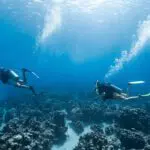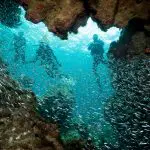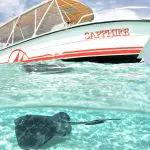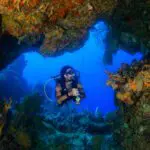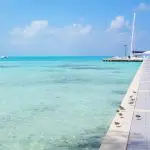The Cayman Islands has a staggering 365 dive sites, with 240 of those around Grand Cayman alone! This not only shows why our home is a world-class diving destination but also why so many people make return visits to explore the sites they couldn’t the first time around!
Our carefully crafted Grand Cayman scuba diving trips include visits to some of the most famous sites, including a USS Kittiwake wreck dive and a dive on Grand Cayman’s North Wall.
But what about our dive instructors? What are their favourite dive sites? If you want to know where our expert team loves to dive, simply scroll down to find out! And please don’t hesitate to get in touch with Red Sail Sports if you have any questions.
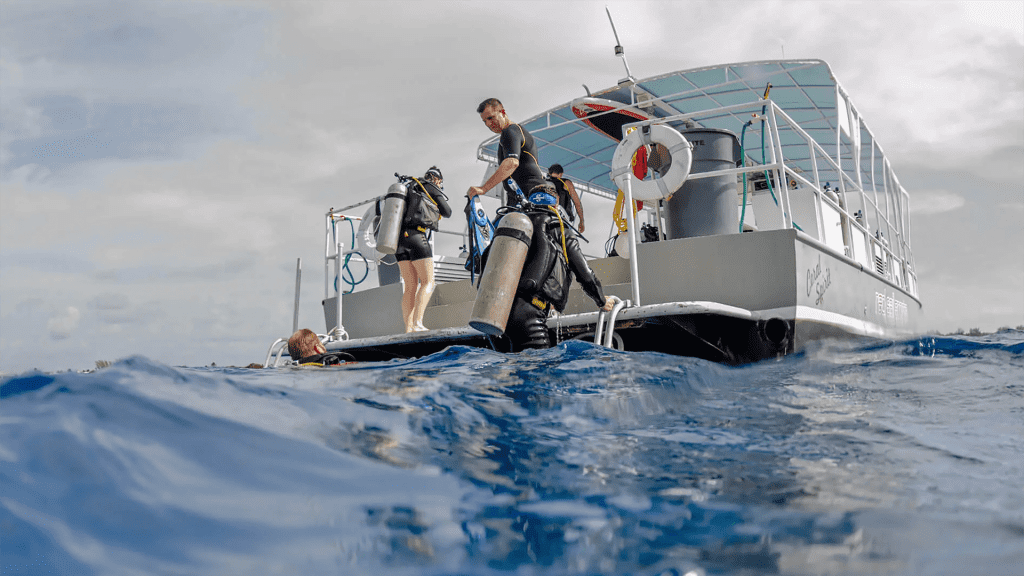
Orange Canyon in West Bay is a Grand Cayman Classic
Clive is our Dive Manager, a Boat Captain, and a Master Scuba Diver Trainer. Having lived in Grand Cayman and worked with Red Sail Sports since 1998, he’s spent countless hours exploring the wonders of our underwater world. His favourite dive site is Orange Canyon.
Located off Grand Cayman’s northwest coast, it features a deep canyon and an impressive collection of large orange elephant ear sponges. These remarkable growths provide a fantastic backdrop for photos! Orange Canyon is a year-round dive site with an average depth of 18 m (59.1 ft) and a maximum depth of 40 m (131.2 ft).
Make sure you’re prepared for your dive trip by reading our blog What are the Risks of Scuba Diving on Grand Cayman Island? when you have finished here.
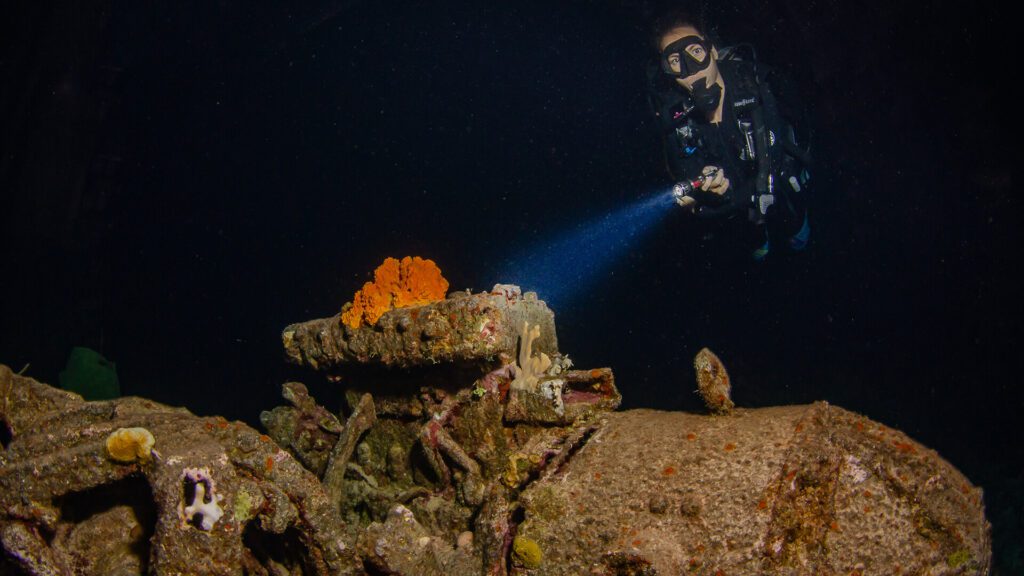
Turtle Schooner Reef is Another West Bay Gem
Alex is a Boat Captain and Open Water Scuba Instructor and dive supervisor who has been part of the Red Sail Sports team since 2017. His favourite dive site is Turtle Schooner Reef.
This shallow site is another gem off Grand Cayman’s northwest coast. It’s home to the Turtle Schooner wreck and a stunning reef. There is a breathtaking diversity of sponges, fans, and other coral species here, all of which attract colourful marine life, large and small. With an average depth of 30m, Turtle Schooner Reef is ideal for divers looking for extended bottom times.
Our Guide to Coral Reef Diving in Grand Cayman is a must-read for anyone interested in exploring these fascinating ecosystems.
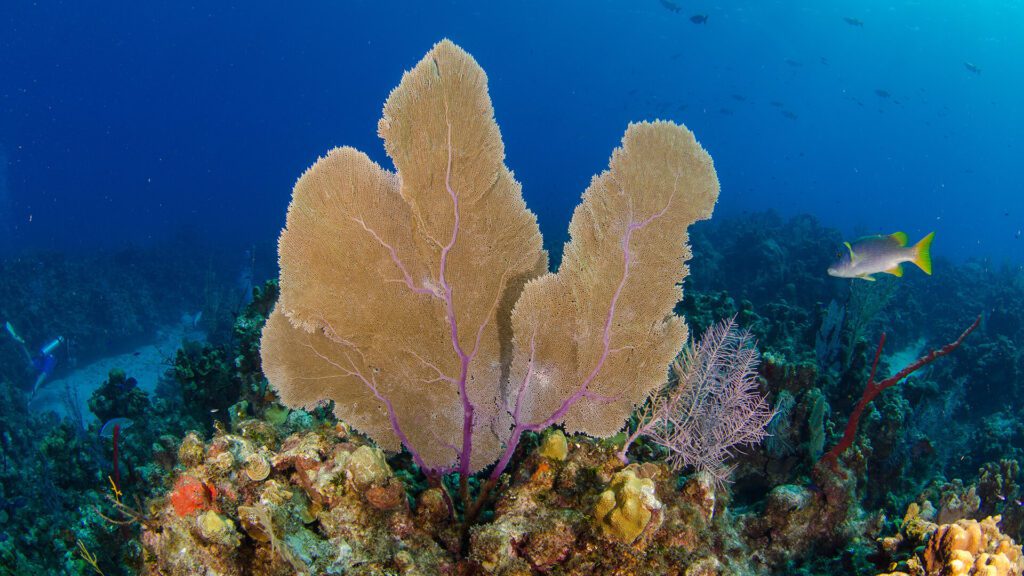
The USS Kittiwake Wreck is an Essential Cayman Dive
JP is a Boat Captain and Master Scuba Diver Trainer. He’s also been with Red Sail Sports since 2017. His favourite dive site is the USS Kittiwake wreck. This 251-foot-long former US Navy ship is one of Grand Cayman’s most famous dive sites. The Kittiwake was deliberately sunk off Seven Mile Beach to create an artificial reef. This carefully chosen location means that it is only a short boat ride away from the main tourist centre.
Our own 2-Tank Kittiwake Wreck Dive in Grand Cayman allows you to explore this world-famous site, including the decks inside the ship. And, of course, you will encounter a dazzling array of exotic marine species and coral formations!
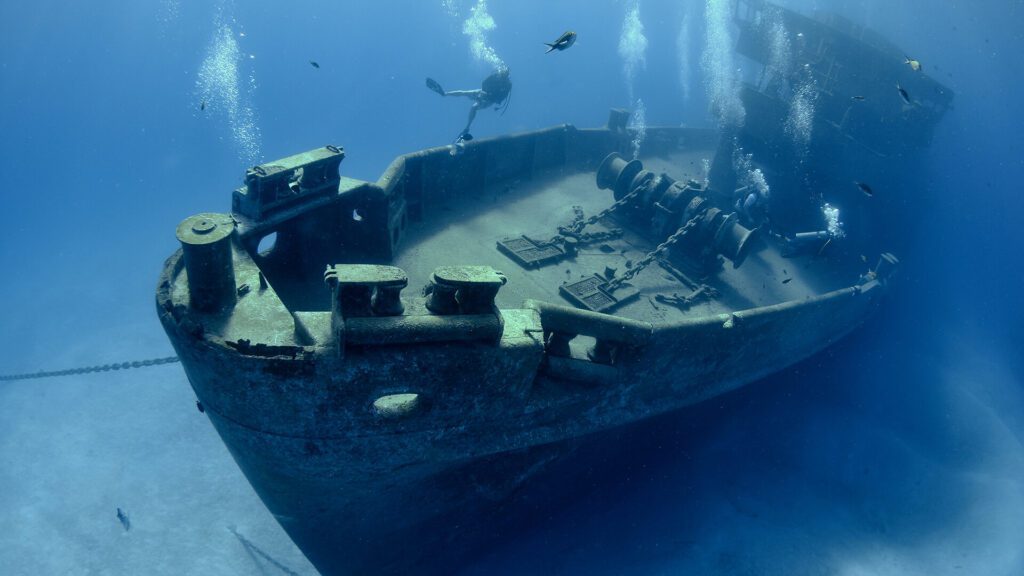
Lone Star Ledges Off Seven Mile Beach Gets Two Votes!
Tasha is a Boat Captain and Open Water Scuba Instructor with Red Sail Sports. Her favourite dive site is Lone Star Ledges, another gem located off Seven Mile Beach. This spot is named after Lone Star Bar & Grill, a restaurant on the shore nearby.
Just some of the key features here are a series of overhangs that are easy and rewarding to explore, as well as coral fingers interspersed by sandy flats. Lone Star Ledges is fairly typical of a shallow dive (60ft, or 18m, and under) in this beautiful part of the ocean, but the unique topography and diversity of marine life make it one of the most popular second dives in Grand Cayman.
Az, another of our dive instructors, also has Lone Star Ledges as one of his favourite dive sites, along with Paradise Reef.
If you’ve landed on this page, don’t have any diver certifications, and are feeling inspired by these recommendations, find out more about becoming a certified scuba diver in the Cayman Islands.
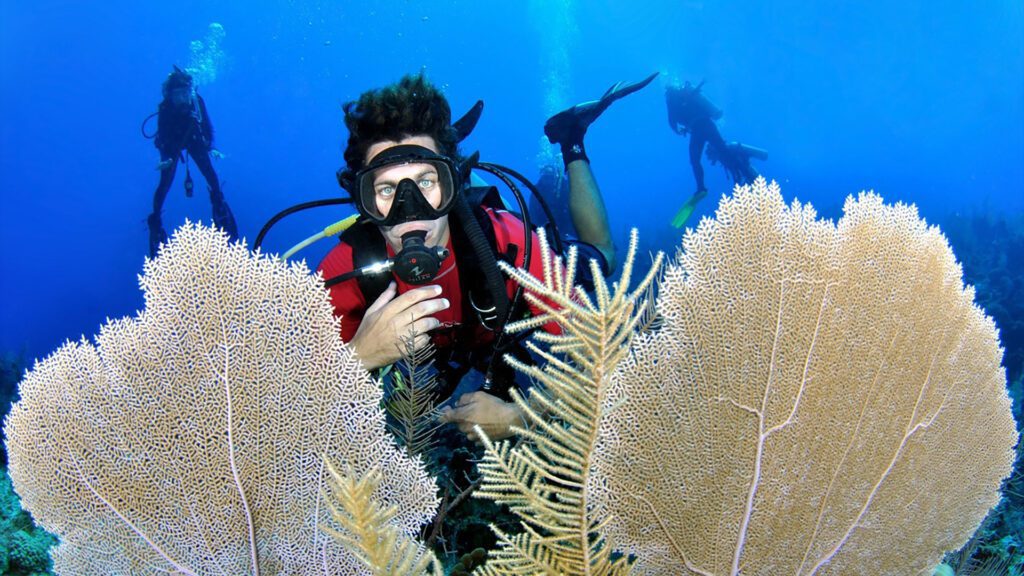
Big Tunnels and Paradise Reef are Seven Mile Beach Must-Visits!
Emerson is an Open Water Scuba Instructor with Red Sail Sports, and his favourite dive sites are Big Tunnels and Paradise Reef.
Big Tunnels is a collection of alleys, swim-throughs, and tunnels that run out to the wall. This includes a huge, 90-foot passage; that’s big enough to fit a medium-sized truck! The abundance of coral and aquatic life is truly breathtaking here, as is the deep blue backdrop that will make your photos even more unique. Another of our team members, Miki, also has Big Tunnels as his number one dive site.
And as you would expect from a site called Paradise Reef, Emerson’s second choice is a stunning underwater environment with a plethora of exotic marine species and intricate coral formations.
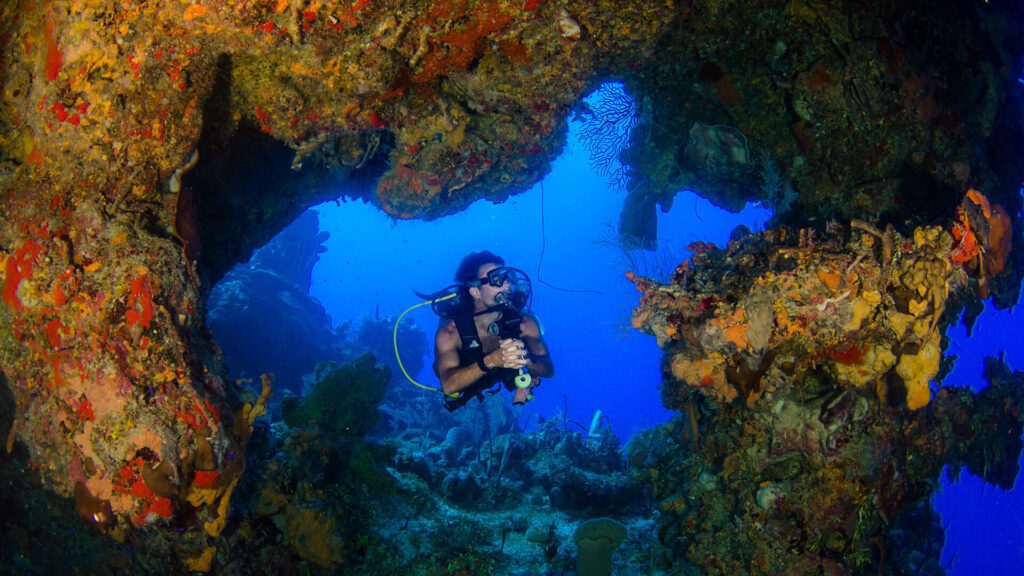
La Mesa in Seven Mile Beach Brings Beauty to the Table
Pablo, another of our Master Scuba Diver Trainers, loves to dive at La Mesa, off Seven Mile Beach. This is another of the West Coast’s incredible shallow dive sites. It’s teeming with life and has one of the highest rates of fish biodiversity anywhere in Grand Cayman. The shallow, wide plateau (hence, Mesa) is covered in coral heads and eventually falls away into a series of coral fingers and canyonways leading out to the drop-off.
As we near the end of this blog, be sure to check out our Ultimate Guide to Diving in the Cayman Islands for even more local insights and recommendations.
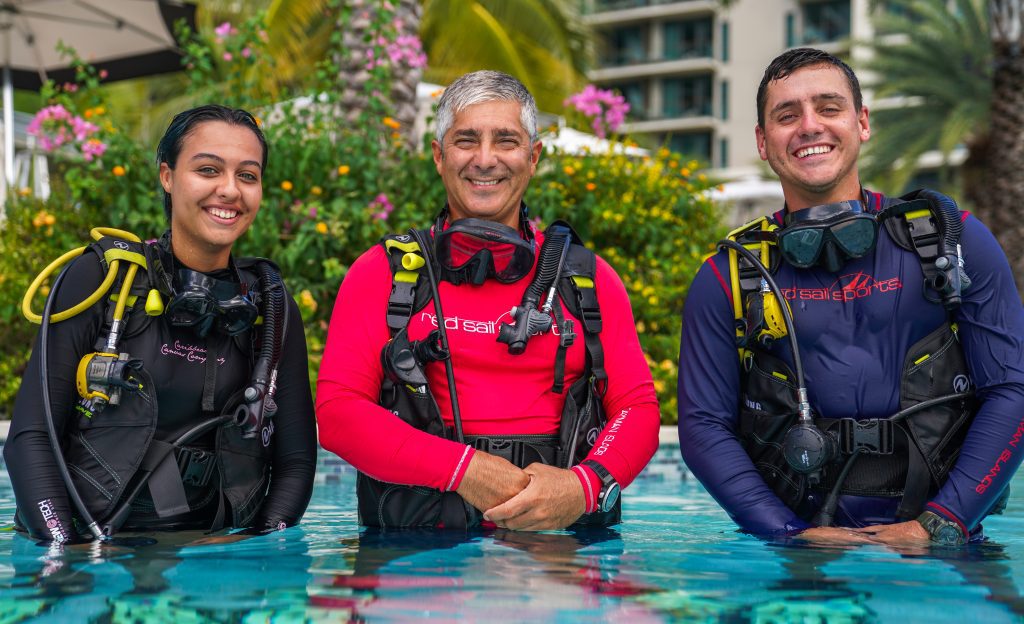
Now Come and Enjoy Grand Cayman Diving with Us!
That’s a wrap on our dive instructors’ favourite dive sites in Grand Cayman, but we’d love to show you around them and more in person. Browse our full range of Grand Cayman scuba diving trips and Grand Cayman dive and sail packages to start planning your adventures!
If you have any pre-booking questions, please don’t hesitate to contact us.



